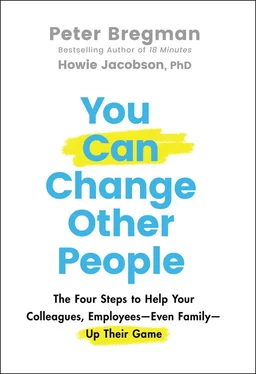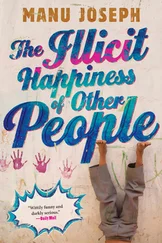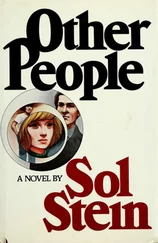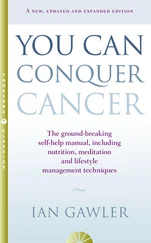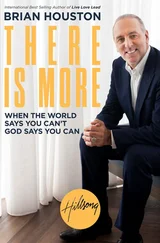If someone doesn't change, they are missing at least one of these powers.
And when you use the Four Steps to help someone change, what you're really doing is igniting these powers in them so they change themselves. In Part Two, I'll teach you to do just that.
This is the practical “how-to” portion of the book. To illustrate the Four Steps, we'll follow one scenario all the way from the initial problem to a detailed plan of action. You'll listen in on the conversation at the beginning of each step. Then we'll debrief that step in the following chapters, exploring underlying principles, dos and don'ts, and exceptions.
Here's a brief description of each step:
Step 1: Shift from Critic to Ally ( Chapters 7– 13) This is the magic move. It gets you to the place where your conversation partner 2 agrees to receive your help. You'll learn how to initiate conversations that help others change. Even better, you'll learn to recognize and capitalize on “silver platter” opportunities, times when people come to you already open to you helping them change—everyday opportunities that are easy to spot once you know what to look for. Start with this step and you'll move quickly past any potential resistance, well positioned as a trusted guide to help your partner change.
Step 2: Identify an Energizing Outcome ( Chapters 14– 17) This step shifts your partner from focusing on the problem to focusing on the outcome they want. It's a deceptively simple reorientation that moves people from frustration to excitement. For many years I didn't think this was such a big deal, but my clients tell me focusing on the desired outcome is not an obvious thing to do when they're mired in a difficult situation. It reliably gives them the right focus, exposing new and creative ways forward.
Step 3: Find the Hidden Opportunity ( Chapters 18– 22) In this step you return to the problem, but now you use it as an opportunity to achieve the outcome in a creative or unexpected way. Here's where you can help people change so that they not only get out of the mess they're in, but emerge at a whole new level of functioning.
Step 4: Create a Level-10 Plan ( Chapters 23– 27) In this final step you help your partner generate, refine, and commit to a specific action plan to achieve their energizing outcome. You're going for a “Level-10” plan, where they know exactly what they're going to do and are confident they can do it. This final step turns insight into action and intentions into impact.
Those are the Four Steps: Ally, Outcome, Opportunity, Plan. If you're into mnemonics, think of “Ally-OOP,” which, appropriately, sounds like the basketball pass that sets your teammate up for a slam dunk.
The companion website to this book ( BregmanPartners.com/change) shares sample “partner dialogues” that demonstrate the Four Steps in different contexts. You'll find typical Four-Step conversations around hard issues that vary by domain (work and personal), power dynamic (supervisor/employee, spouses, parent/child, friends), and topic (work performance, health, relationship, personal goals). Before you have your first Four-Step conversation with a partner, read the sample dialogue that is most similar to the situation. It will help you find the right words to say and what kinds of responses you might expect from your partner.
***
Although I share important principles about personal change, especially in the first few chapters, this is not a conceptual book. You Can Change Other People is a user's manual, meant to be as practical as possible.
Don't wait until you've mastered the Four Steps to start using them to help people change. Transparency is part of this process. You should feel free to share exactly what you're doing and why you're doing it. Tell the truth: “Hey, I got this book and I think I can use the process to help you. I'm new at this, so it may not look smooth and polished. In fact, I might even pause and refer to the text from time to time. Are you open to that?”
Once you've read the book and practiced a few times, you will quickly grow your capability and confidence to use the Four Steps to help the people around you live fuller, richer, more powerful, and more authentic lives.
First, though, let's dispel the myth that people resist change.
1 1Throughout the book, “I” refers to Peter.
2 2Throughout this book, I refer to the person you want to help as your partner with plural pronouns (their, them, etc.). I hope this helps you orient yourself toward them in a supportive, friendly, and collaborative way.
CHAPTER 2 PEOPLE DON'T RESIST CHANGE—THEY RESIST BEING CHANGED: YES, I WANT THAT THIRD BOWL OF ICE CREAM!
Let me say up front, with a father's pride, that my 13-year-old son Daniel is one of the smartest, most talented people I know. He's quick, charming, and witty—and he's the poster child for resistance. Even a basic direction—“Go brush your teeth”—elicits tremendous pushback.
But when Daniel sets his mind to something, his drive, enthusiasm, and persistence are unstoppable. He will change and raise his game in all sorts of ways. Case in point: a gaming PC. He wanted it, but I wouldn't buy it for him. So he went to work, formulating a plan to make enough money to afford it on his own.
He asked his grandfather for an inexpensive drone for his birthday. He spent hours mastering it, learning how to shoot aerial video footage and eventually impressing his Aunt Catherine enough that she hired him to go with her to South Carolina for a week and shoot footage for her real estate company. He was nervous about making the trip by himself but decided to do it. He packed his own bag—no nagging required. He made a stellar video … and $650.
The computer he wanted was still way out of his budget. Undeterred, he discovered a way: He would buy the parts and build it himself. He educated himself on cases, motherboards, graphics cards, fans, and the rest, and ordered them from various websites. He enlisted his cousin Atticus to help him build it. After three months of overcoming obstacles, he finally had his gaming PC.
In order to get what he wanted, Daniel had to change. He learned new skills, started a business, found a client, overcame fears, asked for help, and solved challenging problems—all this from the kid who wouldn't brush his teeth when I asked him to.
Daniel wasn't resistant to change. He was resistant to being changed.
People change all the time on their own. They make big changes like starting businesses, getting married, moving, or getting a new job. And they make smaller changes, like eating healthier, waking up earlier, or listening better.
But people change when they choose to change. If they feel like you're trying to make them change? Forget it.
The problem isn't a lack of skills, tactics, or strategy. Most of the time, people know exactly what to do. They're just not doing it. And it's that gap between what they know and what they do that's the challenge. Telling someone who's overeating sugar to “stop eating sugar” is profoundly unhelpful.
When people struggle with a problem, they often feel shame at their own inadequacy. The very fact that they want or need your help means, to them, that they've already failed. They think some version of “I should be able to handle this on my own. What's wrong with me?”
Now, imagine that you understand their problem and have a great idea that can help them. If you share your solution right away, and they haven't thought of it themselves, that will often bring their shame to the surface. And shame is inhibitory; that is, when people feel shame, they stop taking action. Unlike guilt, which says, I did a bad thing, and can motivate people to change, shame says, I am a bad person , and typically represses initiative and halts momentum.
Читать дальше
